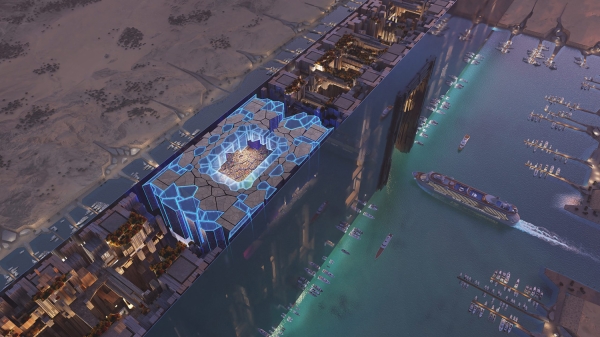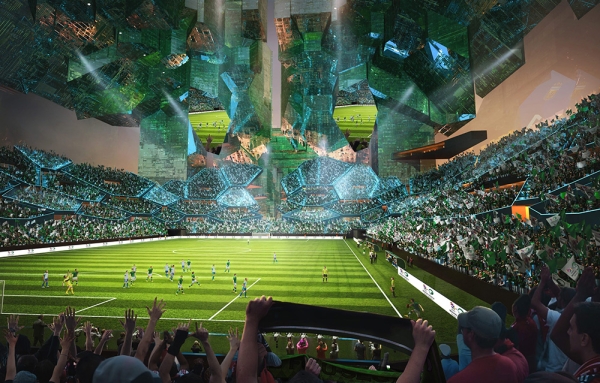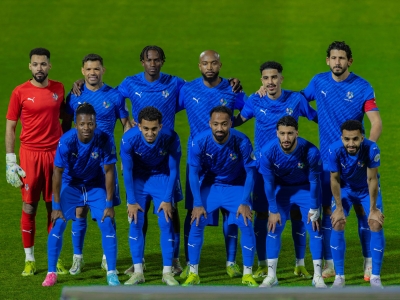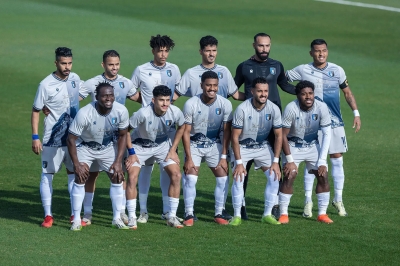


NEOM City, a product of Saudi Vision 2030, plays a key role in the ambitious plan of the Kingdom of Saudi Arabia to reduce the reliance on oil by diversifying the national economy. Located in the northwestern region of the Kingdom along the Red Sea coast, NEOM City is undergoing continuous infrastructure development and creating fifteen sectors, embodying one of the most innovative development projects globally. NEOM's residents and the global football scene will benefit from an international stadium and four facilities that will be utilized as training facilities during the FIFA World Cup 2034.
Tourist destinations, landmarks, and events in NEOM City
- The Line City: An innovative linear city stretching across diverse terrains and climate conditions, including sandy planes, mountains, and plateaus. The Line City is situated five hundred m above sea level. It will run entirely on renewable energy sources, emphasizing urban lifestyle enhancement and sustainability. The first zone in The Line is scheduled to host all the FIFA World Cup 2034 activities. After the tournament, the city's population and the global football community will benefit from four training facilities that will be used as attached training facilities in the host stadiums during the tournament.
Accomodation in NEOM
NEOM City is planned to house over 24,000 hotel units by 2034, providing a diverse range of accommodation options to suit different needs and requirements. NEOM will feature two proposed hotels designated for VIPs and delegations of the Fédération Internationale de Football Association. These hotels are part of the seven luxury hotels planned to be constructed within The Line City. Both hotels will offer seamless access to world-class cultural and shopping experiences.
Travel and transportation in NEOM City
NEOM International Airport is the primary gateway for passengers from and to the city. The airport, located in the eastern part of the new city, is expected to accommodate twelve million local and international passengers annually by 2034. Once visitors exit the airport, they can reach The Line City using high-speed trains or electric vehicles in less than thirty minutes. A comprehensive bus network will connect all parts of NEOM, and by 2034, additional routes will link the city to other host cities.
NEOM's transport strategy focuses on establishing the world's first fully linked and sustainable transport system. Within The Line City, public and private transportation services will be provided via an automated rapid transit (ART) network, similar to trams, and personal rapid transit (PRT) vehicles operating across five horizontal routes. These routes will be set at thirty, 150, 250, 350, and 450 m above sea level, ensuring high-speed and efficient transportation. This network will provide convenient transportation between key areas, including the stadium and fan festival sites. NEOM City aims to develop an energy system relying 100 percent on renewable energy. Sustainable transport options in The Line will offer visitors a pioneering example of how future cities can leverage renewable energy to operate sustainably.
Fan festivals sites
- The marina is the distinctive maritime gateway to The Line City, located near key landmarks such as the Chandelier and the Cruise Terminal. It will offer spaces capable of accommodating forty thousand fans.
- The Marina Steps amphitheater, expected to accommodate forty thousand spectators, is located near transportation routes to NEOM International Airport and accommodation sites. It also offers guests stunning views of the Chandelier.
NEOM Stadium hosting the FIFA World Cup 2034
NEOM Stadium is distinguished by its elevation above ground of more than 350 m. Its roof extends as part of the city's skyline, offering an exceptional football match experience and embodying one of the world's most prominent landmarks. After the tournament, NEOM Stadium will become the main stadium for one of the professional football clubs and a center for sports activities and lifestyle programs in the city.
Related quizzes
Related articles

